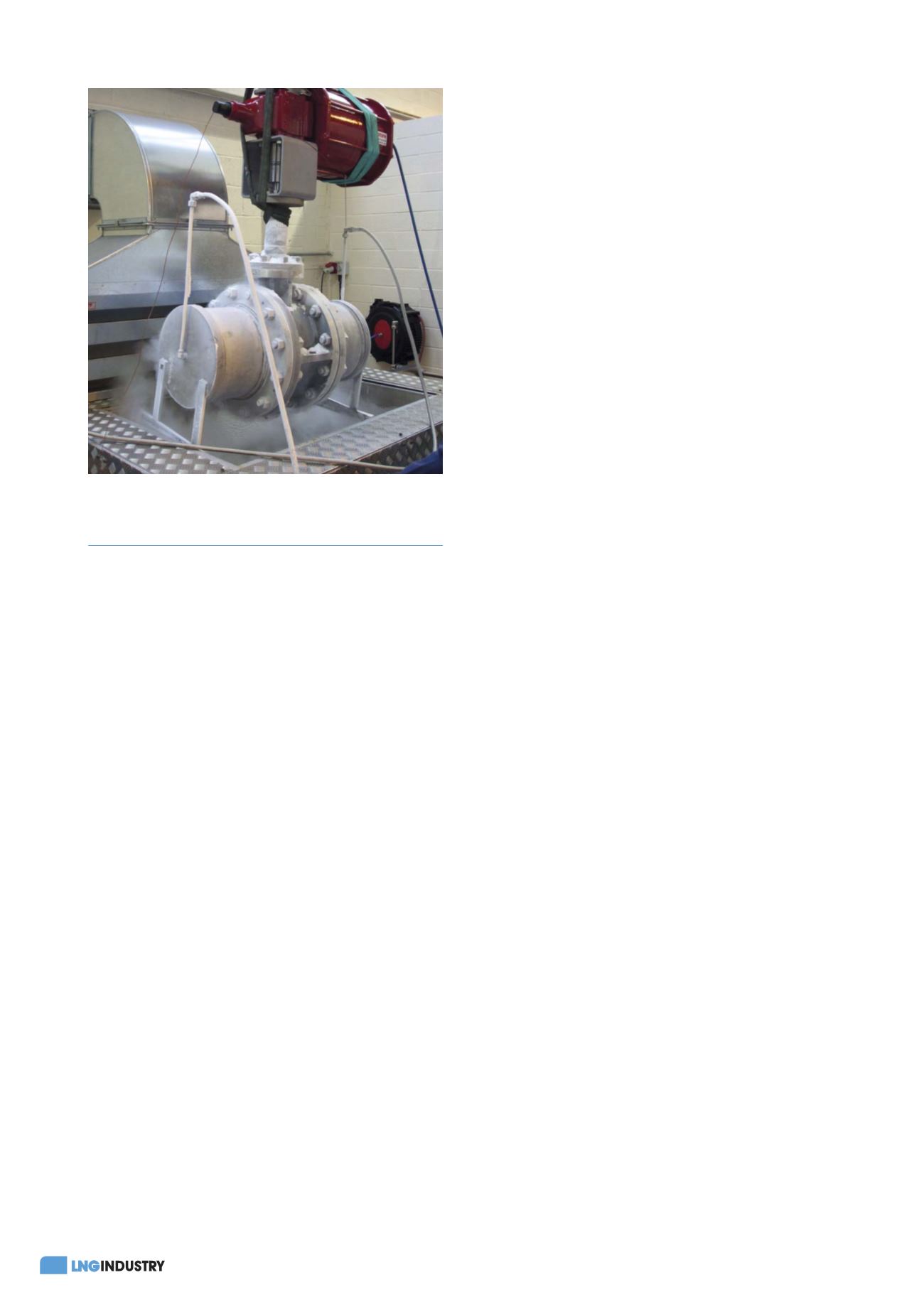
46
April 2020
selection of valve types, technologies and materials. Valves
are a vulnerable part of any system and, especially in an LNG
context, internal or atmospheric leakage represents a major
hazard in terms of the environment and safety. When an
incident occurs, it can escalate into a major event very
quickly, potentially resulting in lengthy, unplanned
downtime.
Conversely, customised cryogenic valves, highly
engineered to handle the specific demands of severe and
critical service applications, can provide a significant
commercial advantage.
Cryogenic valve requirements
Cryogenic valves must provide repeatable, bubble-tight
shut-off during various phases of the -160°C liquefaction
process, and for all downstream applications until the point
of regasification. They need to achieve this in a controlled
manner, in the face of significant differential thermal
dynamics. Valve design must accommodate minimum heat
leakage, minimum cooldown mass and cold impact strength
materials, with ambient air conditions considered, as well
as the temperature of the LNG itself. Cryogenic valves are
designed to operate at a temperature range spanning from
80°C to -196°C, in order to ensure they can comfortably
handle extremes at either end of the spectrum.
Typical cryogenic valve
applications
Some of the most demanding cryogenic valve applications in
LNG production are those associated with liquefaction phase
compressors. Anti-surge, hot gas bypass and Joule-Thomson
let-down processes involve extreme operating parameters,
which can be exacerbated in mega-liquefaction scenarios.
For instance, the Joule-Thomson effect plays a vital role
in cooling the feed gas during liquefaction. Control valves
are used to achieve the effect, handling mixed phase and
gaseous flows at a high differential pressure to accomplish
the desired cooling. Fast and responsive valve operation is
essential. However, this demanding severe service
application brings a host of technical challenges, such as
increased potential for high noise and erosion. What is more,
large flowrates give rise to high power conversion rates, so
the valves must be capable of precise throttling at cryogenic
temperatures.
Likewise, anti-surge valves play an important role
protecting LNG compressors. The performance and reliability
of the compressors has a direct impact on overall production
and profitability. Unplanned downtime for these – or any
aspect of the refrigerant loop – reduces production and can
result in contractual penalties. Furthermore, compressors are
big-ticket assets, so any damage results in costly repairs.
Compressors are most at risk during plant startup and
commissioning. Therefore, anti-surge valves provide
throttling control, recycling a portion of the discharge flow
as the compressor reaches capacity. During normal
day-to-day operation, anti-surge valves remain closed, but
they must be ready to open quickly (in less than two
seconds) in the event of a surge, to protect the compressor
impellers from the sudden reverse flow of a surge event.
Get the specification right
In the absence of dedicated international standards for
LNG cryogenic valves, most specifications are rooted in the
British Standard BS 6364:1984 ‘valves for cryogenic service’,
combined with additional end-user requirements or other
relevant international standards.
To meet the exacting severe service demands of
cryogenic valve applications, such as Joule-Thomson
let-down and compressor anti-surge, it is good practice for
individual valves to receive a robust, intelligence-led
specification. This is generally based on the valve’s specific
requirements (such as speed of operation, pressure
differential, etc.) and the operating conditions it will contend
with (from velocity of the process medium to ambient
temperature).
Getting the specification right unlocks the potential for
advanced valve engineering input, which can deliver
significant benefits in terms of efficiency, performance,
reliability and safety during startup, commissioning and
ongoing operation. Creating time and space for engineering
contractors, operators and valve suppliers to collaborate
during the front-end engineering and design (FEED) stage
can result in breakthrough, cost-effective solutions to help
mitigate risk in the face of escalating demands.
Advanced trim design
Trim modification or customisation can have a considerable
impact on a valve’s ability to perform well in cryogenic LNG
applications. The trim refers to the operating parts exposed
to the process medium, and its design has a major bearing
on factors such as velocity control, noise and erosion. An
effective trim design can represent the difference between
reliable, efficient performance and serious problems, such as
increased risk of leakage and poor process control.
Any high-velocity process medium can cause valve
cavitation, erosion and abrasion of internal components,
resulting in poor control and a higher likelihood of
Figure 1.
Cryogenic valves need to handle arduous
production demands reliably.








